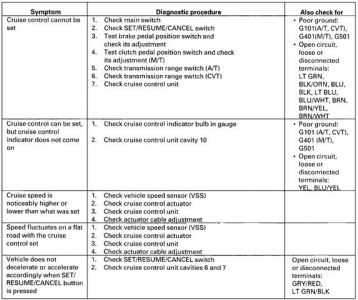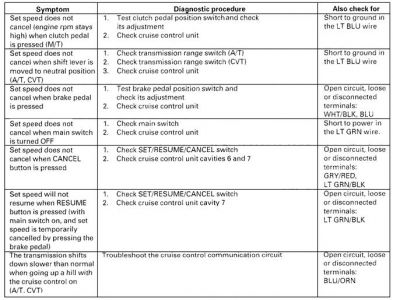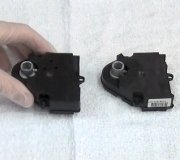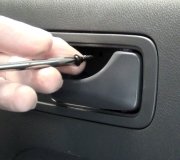If you look up the pedals from under the dash,you would see the switches on a bracket. On the pedal there would be a small brcket that holds a rubber stopper.
If the stopper is bad, you would only see a bracket with a small hole. The switch pin is supposed to pushed by the stopper.
When the pedals are released, the stopper should have minimal clearance between the switch.
CLUTCH PEDAL, CLUTCH PEDAL POSITION SWITCH, AND CLUTCH INTERLOCK SWITCH ADJUSTMENT
NOTE:
"� Remove the driver's side floor mat before adjusting the clutch pedal.
"� The clutch is self-adjusting to compensate for wear.
If there is no clearance between the master cylinder piston and pushrod, the release bearing will be held against the diaphragm spring, which can result in clutch slippage or other clutch problems.
1 . Loosen locknut (A), and back off the clutch pedal position switch (B) (or adjusting bolt)
until it no longer touches the clutch pedal (C).
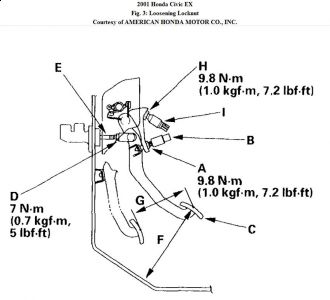
2 . Loosen locknut (D), and turn the pushrod (E) in or out to get the specified height (F) and stroke (G) at the clutch pedal.
3 . Clutch Pedal Stroke: 130 - 140 mm (5.1 - 5.5 in.)
Clutch Pedal Height: 198 mm (7.8 in.)
Tighten locknut (D).
4 . With the clutch pedal released, turn in the clutch pedal position switch (B) until it contacts the clutch pedal (C).
5 . Turn in the clutch pedal position switch (B) an additional 3/4 to 1 turn.
6 . Tighten locknut (A).
7 . Loosen locknut (H) and the clutch interlock switch (I).
8 . Press the clutch pedal to the floor.
9 . Release the clutch pedal 15 -20 mm (0.59 - 0.79 in.) from the fully pressed position, and hold
it there. Adjust the position of the clutch interlock switch (I) so the engine will start with the
clutch pedal in this position.
10 . Tighten locknut (H).
Thursday, October 8th, 2009 AT 2:20 PM

